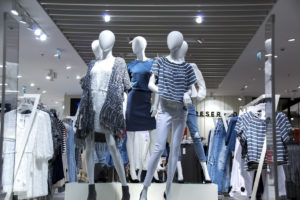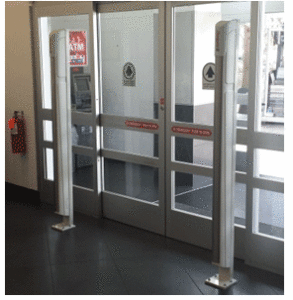 Inventory in a retail store can offer the management and the loss prevention team a clear picture of whether their efforts are working or they need to modify something entirely different.
Inventory in a retail store can offer the management and the loss prevention team a clear picture of whether their efforts are working or they need to modify something entirely different.
After a busy day or during the holidays, inventory plays a very important role in your store. A visual inventory can give you only a glimpse of what is happening, but a true inventory can offer you a real picture, even if it’s more expensive for your store.
There are many software programs that can aid you with the inventory of your store, and even if that becomes a little costly for you, it will pay to know what’s selling, what is not, and what is being stolen.
A software program will aid you by tracking packages that are being delivered, on transit, items which expiration dates are approaching, and items that are selling well and need to be re-stocked. An inventory software program can help you make decisions that otherwise could take weeks to put in place. What items to display, or put on sale, which items to have discounted and which items are selling so well you need to put an order in place.
A simple Google search can deliver a list of the most promising software inventory programs that can help you. Those programs can offer an array of features you may not even know you need, and the companies selling those software programs can offer you pricing for you to compare other programs and their features. Do you know an owner of a retail store that is using a software program? Have you asked them how they like it? If you know someone that is already using an inventory software program, you are in luck. It can save you time and perhaps money when you decide you are ready to purchase one yourself.
There are many small business owners that own a retail store that has many issues they do not know how to solve. Starting with problems with personnel, management, and loss prevention techniques, the issues can be many and varied.
Address those issues before you buy any software programs to help you with the inventory of your store. What are some of the strength and weaknesses you need to address with the personnel of your store? Is the management team coordinating with the loss prevention team? Is there a loss prevention team? Are they addressing the issues or just pushing them aside for other people to tackle? Not all problems can be solved by buying software or by hiring more employees. There are many problems that can be solved by being vigilant and by addressing those problems without hesitation. A software program can help, but that is only one key aspect of running a store.
 March is known for coming in like a lion and going out like a lamb. April showers bring May flowers but what in the world does May bring? May ushers in the summer sales season! Spring is wrapping up and now is the time to be getting your store ready for all of the shoppers looking for the items that will make the long, warm days of June, July and August a memorable time. The big stores are rolling out grills, picnic wares and yard games.
March is known for coming in like a lion and going out like a lamb. April showers bring May flowers but what in the world does May bring? May ushers in the summer sales season! Spring is wrapping up and now is the time to be getting your store ready for all of the shoppers looking for the items that will make the long, warm days of June, July and August a memorable time. The big stores are rolling out grills, picnic wares and yard games. Recently, I conducted an employee theft investigation for a client. I want to share some of the findings from that investigation in the hopes that you can use it to review your own potential for losses.
Recently, I conducted an employee theft investigation for a client. I want to share some of the findings from that investigation in the hopes that you can use it to review your own potential for losses. 
 Sometime this year you will most likely be conducting an inventory. Some stores even conduct multiple inventories when they have high stock shortage results. While it does not necessarily translate to poor results, a lack of adequate preparation can have an impact on the final shortage numbers.
Sometime this year you will most likely be conducting an inventory. Some stores even conduct multiple inventories when they have high stock shortage results. While it does not necessarily translate to poor results, a lack of adequate preparation can have an impact on the final shortage numbers. Many small and big chain businesses across the country are fed up with the amount they lose due to shoplifting and employee theft.
Many small and big chain businesses across the country are fed up with the amount they lose due to shoplifting and employee theft. Some of the most stolen items in stores in the United States are not surprising. From Infant formula to razors, people are stealing these items to sell them for quick cash or because they are shoplifters that are dedicated to doing this crime. Valentine’s Day is approaching, and some of the items that seem to be gifted during this day are among the most commonly stolen items in the United States. A shoplifter will steal any time of the year, whether the opportunity presents itself or not, or whether it’s a holiday or a weekday. As a store manager or employee of a store, greeting and treating a customer politely can gain you a customer, and deter a shoplifter from stealing from your store. Customer service has been proven time and again to be a great deterrent to shoplifters, and cannot hurt to be polite and competent with your regular customers.
Some of the most stolen items in stores in the United States are not surprising. From Infant formula to razors, people are stealing these items to sell them for quick cash or because they are shoplifters that are dedicated to doing this crime. Valentine’s Day is approaching, and some of the items that seem to be gifted during this day are among the most commonly stolen items in the United States. A shoplifter will steal any time of the year, whether the opportunity presents itself or not, or whether it’s a holiday or a weekday. As a store manager or employee of a store, greeting and treating a customer politely can gain you a customer, and deter a shoplifter from stealing from your store. Customer service has been proven time and again to be a great deterrent to shoplifters, and cannot hurt to be polite and competent with your regular customers. With darker daylight hours comes the need for more coffee, the use of lights earlier and a plan to keep crime away from your store or business. Have you considered that one of the following types of crime could affect you?
With darker daylight hours comes the need for more coffee, the use of lights earlier and a plan to keep crime away from your store or business. Have you considered that one of the following types of crime could affect you?

 Big corporations across the globe worry about cybersecurity attacks and the repercussions those attacks have on the corporation’s bottom line. These cybersecurity attacks to their servers and information databases can be costly and can bring with them costly lawsuits as well. But, according to many analysts, employee theft and shoplifting are the more concerning issues affecting the retail industry. They alone account for more than two-thirds of their shrinkage and that figure seems to be rising every year. During the holiday season, those issues become more problematic and costly, and the retail industry looks for ways to prevent the great loses they will certainly suffer during this jolly time.
Big corporations across the globe worry about cybersecurity attacks and the repercussions those attacks have on the corporation’s bottom line. These cybersecurity attacks to their servers and information databases can be costly and can bring with them costly lawsuits as well. But, according to many analysts, employee theft and shoplifting are the more concerning issues affecting the retail industry. They alone account for more than two-thirds of their shrinkage and that figure seems to be rising every year. During the holiday season, those issues become more problematic and costly, and the retail industry looks for ways to prevent the great loses they will certainly suffer during this jolly time.